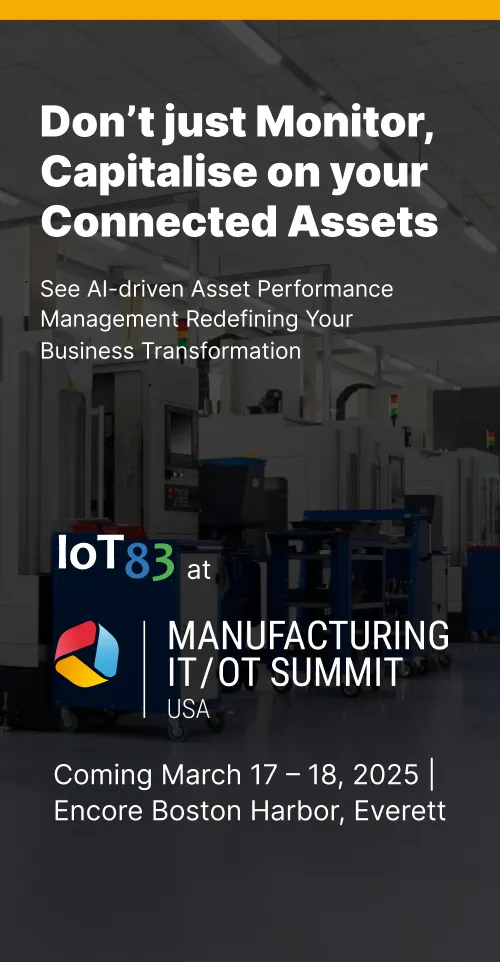Industrial OEMs can access a treasure trove of data that has potential for innovation. However, quickly transforming a project from a concept to a scalable IoT solution in the market could be challenging for many businesses. The ability to connect devices, systems, and services offers vast opportunities for business model transition and newer revenue streams.
However, despite the potential, a striking statistic reveals that only 20% of Original Equipment Manufacturers (OEMs) achieve faster time-to-market and succeed in their IoT projects.
This begs the question: what sets these successful OEMs apart?
How Time to Market Soared in Past 4 Years
A recent study by IoT Analytics revealed a concerning trend where OEMs are taking significantly longer to bring their IoT products to market. The average TTM has climbed a staggering 80% in just four years. This sluggishness can be detrimental - competitors can capitalize on the delay, market dynamics can shift, and early-mover advantages are lost. Understanding the reasons behind this slowdown is crucial for navigating the increasingly competitive IoT landscape.
8 Keys Areas to Unlocking Faster Time-to-Market
Fortunately, some strategies can help Industrial OEMs streamline their processes and significantly reduce their TTM. Here are eight key areas to focus on:
- Innovation and R&D Investment: Staying ahead of the curve requires continued research and development (R&D) investment. This ensures your products utilize the latest technologies and address evolving customer needs.
- Agile Product Development Processes: Traditional, waterfall-style development methodologies are often too slow for the dynamic IoT market. With their iterative technique and concentration on continuous advancement, Agile methodologies allow for faster product adaptation and quicker response to market demands.
- Strategic Product Management: Having a clear product roadmap with well-defined goals and milestones is essential. Strategic product management ensures your development efforts are focused on features and functionalities that truly resonate with your target audience.
- Regulatory and Compliance Efficiency: Meeting stringent regulations associated with data privacy, security, and environmental impact can be time-consuming. However, a deep understanding of these regulations and efficient compliance processes can significantly reduce delays.
- Strong Leadership and Decision-Making: Effective leadership is essential in driving projects forward. Leaders who can make quick, well-informed decisions, empower their teams, and navigate challenges effectively will accelerate product rollouts.
- Customer-Centric Approach: OEMs must understand their customer's needs and pain points. You can ensure your product resonates in the market by actively involving them in the development process, gathering feedback, and focusing on solutions that address their specific challenges.
- Technology and Data Utilization: Controlling technical debt and managing unstructured databases are crucial for inventory management. They ensure system reliability, reduce downtime, and improve data accuracy, leading to efficient operations and cost savings. Properly structured data supports accurate inventory tracking and reliable warranty information, enhancing customer satisfaction and regulation compliance.
- Collaborative Ecosystems: Building strong partnerships with technology providers, software developers, and other industry players can provide access to specialized expertise, accelerate development, and bring together the resources needed for successful product launches.
Flex83 to Build and Own Your Industrial IoT Platform with 10x TTM
While these 8 aspects are crucial, there's an additional game-changer for accelerating Time to Market while developing smart industrial solutions.

Unlike general-purpose cloud services, the AIoT middleware platform comes with pre-built microservices, core SDKs, 40+ modules as functions, AEP APIs and models, UI/UX design libraries and components, and edge agents, all clubbed to provide an infrastructure as code (IaC) to provide you the foundation to build system management, data handling, generic IoT and specialized OEM applications such as Asset Performance Management, Asset Remote Monitoring, predictive/preventive, and inventory management solutions. This specialization allows for more streamlined and efficient Industrial IoT development processes.
Imagine a platform that eliminates the need to build the entire IoT infrastructure from scratch—device connectivity, data management, analytics tools, and security features are all readily available. By leveraging the Flex83 middleware platform, OEMs can potentially achieve a 10x faster Time to Market, allowing them to focus their resources on product innovation and differentiation. Making it a new-age approach for incorporating faster business model transitions, unfolding a wealth of potential benefits for Industrial OEMs.
Conclusion
Industrial OEMs that can navigate the complexities and optimize their Time to Market will be the ones who capture market share and achieve long-term success. By focusing on the ten key areas explored in this article and strategically utilizing application enablement platforms, OEMs can transform the full prospect of their IoT projects and become leaders in the age of connected devices.
By leveraging industry-specific services and expertise, Flex83 Middleware can help OEMs achieve their business transformation goals faster and improve customer service, operational excellence, as well as gaining a competitive edge.






.jpg)

%20(1).jpg)



.jpg)